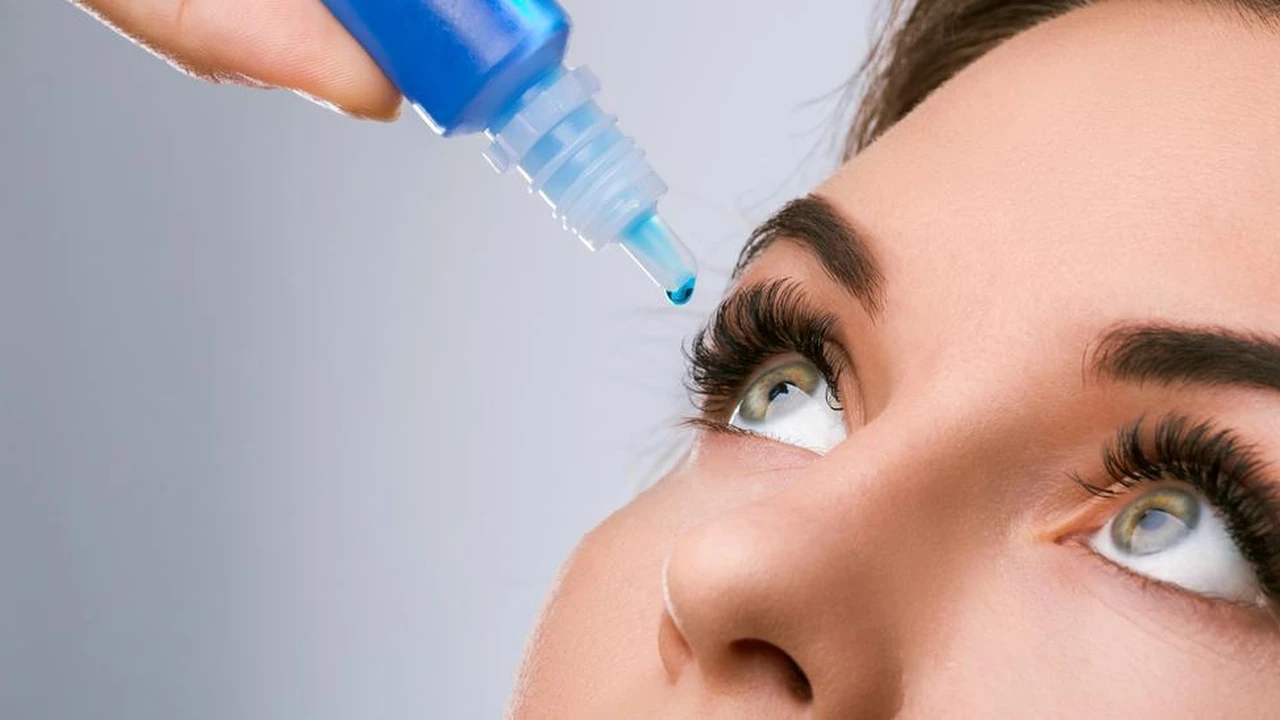
Tips for managing dry eyes in winter. Combat the effects of cold, dry air on your vision and comfort.
Winter, with its crisp air and cozy indoor heating, often brings a less welcome guest: dry eyes. If you've ever experienced that gritty, burning, or watery sensation when the temperatures drop, you're not alone. Dry eye syndrome, or keratoconjunctivitis sicca, is a common condition, and it tends to worsen significantly during the colder months. But why does this happen, and more importantly, what can you do about it? Let's dive into the world of winter dry eyes and explore practical solutions to keep your peepers comfortable and healthy.
H2 Understanding Winter Dry Eyes Causes and Symptoms
So, what's the deal with winter and dry eyes? It primarily boils down to environmental factors. Outdoors, the air is typically colder and less humid. When you step inside, central heating, fireplaces, and even space heaters blast warm, dry air, further stripping moisture from your surroundings. This low humidity environment accelerates the evaporation of your tear film, which is the protective layer of fluid that covers the surface of your eyes. Think of it like leaving a glass of water out in a very dry room – it evaporates much faster than in a humid one. Your eyes are constantly exposed to this drying effect.
Beyond environmental factors, other elements can exacerbate dry eyes in winter. Wind, especially when participating in winter sports like skiing or snowboarding, can rapidly dry out your eyes. Dehydration, often overlooked in colder weather because we don't feel as thirsty, also plays a role. Certain medications, screen time, and underlying health conditions can also contribute. Recognizing the symptoms is the first step to managing them. Common signs include a gritty or sandy sensation, burning or stinging, redness, light sensitivity, blurred vision, and paradoxically, excessive watering. Your eyes might water as a reflex to irritation, trying to compensate for the dryness.
H2 Essential Strategies for Winter Eye Comfort Hydration and Humidification
The good news is that many strategies can help you combat winter dry eyes. Let's start with the basics: hydration and humidification. Staying adequately hydrated internally is crucial. Even if you don't feel parched, make an effort to drink plenty of water throughout the day. Herbal teas and warm broths can also contribute to your fluid intake. Aim for at least eight glasses of water daily, or more if you're active.
Externally, humidifiers are your best friend. Placing a humidifier in your bedroom, living room, or office can significantly increase the moisture content in the air, slowing down tear evaporation. There are various types of humidifiers, from cool mist to warm mist. For eye comfort, the type matters less than simply adding moisture. Consider models with a humidistat that allows you to set a desired humidity level, typically between 30-50% for optimal comfort and to prevent mold growth. For instance, the Levoit Core 300S Smart Humidifier (around $50-70 USD) is a popular choice for bedrooms, offering quiet operation and smart features. For larger spaces, the Honeywell HWM705B Warm Mist Humidifier (around $40-60 USD) is a reliable option. Remember to clean your humidifier regularly to prevent the buildup of bacteria and mold.
H2 Over the Counter Eye Drops and Artificial Tears Product Recommendations
Artificial tears are a cornerstone of dry eye management. These over-the-counter eye drops provide temporary relief by lubricating the eye surface and supplementing your natural tear film. With so many options available, choosing the right one can be overwhelming. Here's a breakdown of types and some popular products:
- Preservative-Free Artificial Tears: If you use eye drops frequently (more than four times a day) or have sensitive eyes, preservative-free options are highly recommended. Preservatives, while preventing bacterial growth in the bottle, can sometimes irritate the eye surface with prolonged use. These often come in individual single-use vials.
- Thicker Formulations (Gels and Ointments): For more severe dry eye symptoms, especially at night, thicker gels or ointments can provide longer-lasting relief. They tend to blur vision temporarily, so they're best used before bed.
- Lipid-Based Artificial Tears: Some dry eye is caused by a deficiency in the oily layer of the tear film (Meibomian Gland Dysfunction). Lipid-based drops help stabilize this layer, reducing evaporation.
H3 Recommended Artificial Tear Products
- Systane Ultra Lubricant Eye Drops (Preservative-Free Vials): A widely recommended option for general dry eye relief. They provide quick and effective lubrication. A pack of 25-30 vials typically costs around $15-25 USD.
- Refresh Optive Mega-3 Lubricant Eye Drops (Preservative-Free): These drops contain flaxseed oil, which helps to fortify the lipid layer of the tear film, making them particularly good for evaporative dry eye. A 30-vial pack is usually $20-30 USD.
- TheraTears Dry Eye Therapy Lubricant Eye Drops (Preservative-Free): Known for their unique electrolyte balance that mimics natural tears. A 30-vial pack is often priced at $15-25 USD.
- Refresh PM Lubricant Eye Ointment: An excellent choice for overnight relief. Apply a small amount before bed to keep eyes lubricated throughout the night. A small tube costs around $10-15 USD.
- Optase Dry Eye Spray: This is a unique product that you spray onto closed eyelids. It contains liposomal ingredients that help stabilize the tear film. It's convenient for on-the-go use and can be applied over makeup. A 17ml bottle is typically $20-30 USD.
When using eye drops, always follow the instructions on the packaging. If you wear contact lenses, check if the drops are safe for use with your lenses, or remove your lenses before applying and wait a few minutes before reinserting them.
H2 Lifestyle Adjustments and Environmental Controls for Eye Health
Beyond drops and humidifiers, several lifestyle adjustments can make a big difference. First, protect your eyes from the elements. When outdoors, especially in windy or snowy conditions, wear wraparound sunglasses or goggles. This creates a physical barrier that reduces tear evaporation. For winter sports, proper ski goggles are essential not just for vision but also for eye protection. Brands like Oakley and Smith Optics offer excellent goggle options with various lens technologies for different light conditions, typically ranging from $100-300 USD.
Consider your screen time. Prolonged use of computers, tablets, and smartphones can reduce your blink rate, leading to increased tear evaporation. Follow the 20-20-20 rule: every 20 minutes, look at something 20 feet away for at least 20 seconds. This helps to relax your eye muscles and encourages blinking. Also, position your screen slightly below eye level to minimize the exposed surface area of your eyes.
Avoid direct exposure to heating vents, fans, and hair dryers, as these can blow dry air directly onto your eyes. If you use a fireplace, be mindful of the dry heat it generates. Consider placing a pot of water near the fireplace to add some moisture to the air.
H2 Nutritional Support and Omega 3 Fatty Acids for Eye Wellness
What you eat can also impact your eye health. Omega-3 fatty acids, found in fatty fish like salmon, tuna, and mackerel, as well as flaxseed and chia seeds, are known for their anti-inflammatory properties. Some studies suggest that regular intake of omega-3s can improve the quality of the oily layer of the tear film, reducing dry eye symptoms. If you don't consume enough omega-3 rich foods, supplements are an option. Look for high-quality fish oil supplements that are third-party tested for purity and potency.
H3 Recommended Omega-3 Supplements
- Nordic Naturals Ultimate Omega: A highly reputable brand known for its purity and high concentration of EPA and DHA (the beneficial omega-3s). A bottle of 120 soft gels typically costs $30-50 USD.
- Barlean's Organic Lignan Flax Oil: For a plant-based omega-3 source, flax oil is an excellent choice. It can be added to smoothies, salads, or taken directly. A 16oz bottle is usually $15-25 USD.
Always consult with your doctor before starting any new supplement regimen, especially if you have underlying health conditions or are taking other medications.
H2 When to Seek Professional Help for Persistent Dry Eyes
While many cases of winter dry eyes can be managed with home remedies and over-the-counter products, there are times when professional medical attention is necessary. If your symptoms are severe, persistent, or significantly impacting your daily life, it's time to see an eye care professional (optometrist or ophthalmologist). They can accurately diagnose the cause of your dry eyes and recommend more advanced treatments.
These treatments might include prescription eye drops (like Restasis, Xiidra, or Cequa) that help your eyes produce more natural tears, punctal plugs to block tear drainage, or in-office procedures to address Meibomian Gland Dysfunction. Don't hesitate to seek help if your dry eye symptoms are not improving with conservative measures. Your eye health is paramount, and a professional can provide a tailored treatment plan to ensure your eyes stay comfortable and healthy, even in the harshest winter conditions.
By understanding the causes, implementing preventive measures, and utilizing the right products, you can effectively manage dry eyes in winter and enjoy the season without discomfort. Keep those eyes happy and hydrated!
:max_bytes(150000):strip_icc()/277019-baked-pork-chops-with-cream-of-mushroom-soup-DDMFS-beauty-4x3-BG-7505-5762b731cf30447d9cbbbbbf387beafa.jpg)






